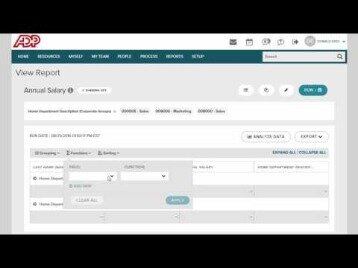
If you dispose of property before the end of its recovery period, see Using the Applicable Convention, later, for information on how to figure depreciation for the year you dispose of it. For property for which you used a half-year convention, the depreciation deduction for the year of the disposition is half the depreciation determined for the full year. Under this convention, you treat all property placed in service or disposed of during any quarter of the tax year as placed in service or disposed of at the midpoint of that quarter. This means that, for a 12-month tax year, 1½ months of depreciation is allowed for the quarter the property is placed in service or disposed of.
- The latest real estate tax assessment on the property was based on an assessed value of $160,000, of which $136,000 was for the house and $24,000 was for the land.
- For 12 of these days, the tenant wasn’t able to use the apartment and allowed you to use it even though you didn’t refund any of the rent.
- If you use a dwelling unit for both rental and personal purposes, divide your expenses between the rental use and the personal use based on the number of days used for each purpose.
- While they may effectively be building improvements, leasehold improvements are distinctly different.
- If the landlord does the work and pays for it, for example, then the landlord claims the depreciation and there are no tax consequences to the tenant.
Chapter 3 covers the reporting of your rental income and deductions, including casualties and thefts, limitations on losses, and claiming the correct amount of depreciation. Before the enactment of the Tax Cuts and Jobs Act (TCJA), the depreciation rate for building improvements was 15 years. This period is not fixed, and the recovery period has changed multiple times over the past few decades. However, 15 years was the relevant period from 2004 through 2017. If the request for leasehold improvements is denied, however, the tenant could resort to moving to a different property, especially if the change is necessary for them to utilize the property fully. If the activity or the property is not included in either table, check the end of Table B-2 to find Certain Property for Which Recovery Periods Assigned.
What can be capitalized under leasehold improvements?
Therefore, you would use the rules in chapter 1 when figuring your rental income and expenses. If you don’t rent your property to make a profit, you can’t deduct rental expenses in excess of the amount of your rental income. You can’t deduct a loss or carry forward to the next year any rental expenses that are more than your rental income for the year. You don’t have to divide the expenses that belong only to the rental part of your property.
Or they can correct the depreciation for such “one-year property” by filing an amended return. The problem here is that it is sometimes hard to figure out who paid for the improvement, especially if the modifications are being traded for higher (or lower) rents. If the landlord does the work and pays for it, for example, then the landlord claims the depreciation and there are no tax consequences to the tenant. But if the tenant is reimbursing those works indirectly through the rent, then the tax position gets mighty complicated, involving depreciation and tax deductions for both parties. This is one area where you definitely will need some professional tax advice. Tenants sometimes pay for their own leasehold improvements when they first build out the property and it is ready for the grand opening, and they often pay for remodels and refurbishments carried out during the lease term.

If you use your item of listed property 30% of the time to manage your investments and 60% of the time in your consumer research business, it is used predominantly for qualified business use. Your combined business/investment use for determining your depreciation deduction is 90%. On December 2, 2019, you placed in service an item of 5-year property costing $10,000. You did not claim a section 179 deduction and the property does not qualify for a special depreciation allowance. You used the mid-quarter convention because this was the only item of business property you placed in service in 2019 and it was placed in service during the last 3 months of your tax year.
Overview of Depreciation
It also discusses other information you need to know before you can figure depreciation under MACRS. This information includes the property’s recovery class, placed in service date, and basis, as well as the applicable recovery period, convention, and depreciation method. It explains how to use this information to figure your depreciation deduction and how to use a general asset account to depreciate a group of properties. Finally, it explains when and how to recapture MACRS depreciation. You purchased a single family rental house for $185,000 and placed it in service on February 8.
- Even if the requirements explained earlier under What Property Qualifies?
- Any day that you spend working substantially full time repairing and maintaining (not improving) your property isn’t counted as a day of personal use.
- In figuring the taxable income of an S corporation, disregard any limits on the amount of an S corporation item that must be taken into account when figuring a shareholder’s taxable income.
- If you and your spouse file separate returns, you are treated as one taxpayer for the dollar limit, including the reduction for costs over $2,700,000.
- You made a down payment to purchase rental property and assumed the previous owner’s mortgage.
To qualify for the section 179 deduction, your property must be one of the following types of depreciable property. If you do not claim depreciation you are entitled to deduct, you must still reduce the basis of the property by the full amount of depreciation allowable. You cannot use MACRS for motion picture films, videotapes, and sound recordings.
What is Qualified Leasehold Improvement Property?
The election must generally cover all property in the same property class that you placed in service during the year. However, the election for residential rental property and nonresidential real property can be made on a property-by-property basis. If the software meets the tests above, it may also qualify for the section 179 deduction and the special depreciation allowance, discussed later in chapters 2 and 3.
The percentages in these tables take into account the half-year and mid-quarter conventions. Use Table 2-2a for 5-year property, Table 2-2b for 7-year property, and Table 2-2c for 15-year property. Use the percentage in the second column (half-year convention) unless you are required to use the mid-quarter convention (explained earlier). If you must use the mid-quarter convention, use the column that corresponds to the calendar year quarter in which you placed the property in service.
AccountingTools
The convention you use determines the number of months for which you can claim depreciation in the year you place property in service and in the year you dispose of the property. Generally, you must use MACRS to depreciate real property that you acquired for personal use before 1987 and changed to business or income-producing use after 1986. This includes your residence that you changed to rental use.
You figure the depreciation rate under the SL method by dividing 1 by 5, the number of years in the recovery period. The result is 20%.You multiply the adjusted basis of the property ($1,000) by the 20% SL rate. You apply the half-year convention 2017 aca reporting by dividing the result ($200) by 2. Depreciation for the first year under the SL method is $100. You figure the depreciation rate under the 200% DB method by dividing 2 (200%) by 5 (the number of years in the recovery period).
CHIPOTLE ANNOUNCES FOURTH QUARTER AND FULL YEAR … – IR@chipotle.com
CHIPOTLE ANNOUNCES FOURTH QUARTER AND FULL YEAR ….
Posted: Tue, 07 Feb 2023 08:00:00 GMT [source]
You placed the computer in service in the fourth quarter of your tax year, so you multiply the $2,000 by 12.5% (the mid-quarter percentage for the fourth quarter). The result, $250, is your deduction for depreciation on the computer for the first year. If there are no adjustments to the basis of the property other than depreciation, your depreciation deduction for each subsequent year of the recovery period will be as follows. In July 2022, the property was vandalized and they had a deductible casualty loss of $3,000. Sandra and Frank must adjust the property’s basis for the casualty loss, so they can no longer use the percentage tables. Their adjusted basis at the end of 2022, before figuring their 2022 depreciation, is $11,464.
Maple can depreciate the leased cars because the cars are not held primarily for sale to customers in the ordinary course of business, but are leased. If you lease property to someone, you can generally depreciate its cost even if the lessee (the person leasing from you) has agreed to preserve, replace, renew, and maintain the property. You are considered as owning property even if it is subject to a debt. Although we can’t respond individually to each comment received, we do appreciate your feedback and will consider your comments and suggestions as we revise our tax forms, instructions, and publications.

The first recovery year for the 5-year property placed in service during the short tax year extends from August 1 to July 31. Tara deducted 5 months of the first recovery year on its short-year tax return. Seven months of the first recovery year and 5 months of the second recovery year fall within the next tax year. The depreciation for the next tax year is $333, which is the sum of the following. Tara Corporation, a calendar year taxpayer, was incorporated on March 15.
Generally accepted accounting principles require that the improvement be depreciated on a straight-line basis over the shorter of either the useful life or the lease term. For example, if the improvement cost $1,000 and would last for at least 10 years and the lease term is five years, you would depreciate the cost over a five-year period, taking an expense of $200 per year. Congress’s original intention was for leasehold improvements to have a 15-year write-off period, which would enable you to expense the entire cost of the work in year one. But thanks to the drafting error, qualified leasehold improvement property is generally assigned a 39-year recovery period, so it falls outside the scope of the bonus depreciation rules. As the current law stands, you have to depreciate the leasehold improvements on a straight-line basis over 39 years with no bonus depreciation. If the depreciation deductions for your automobile are reduced under the passenger automobile limits, you will have unrecovered basis in your automobile at the end of the recovery period.

Under the income forecast method, each year’s depreciation deduction is equal to the cost of the property, multiplied by a fraction. For more information, see section 167(g) of the Internal Revenue Code. Your depreciation deduction for the year cannot be more than the part of your adjusted basis in the stock of the corporation that is allocable to your business or income-producing property. You must also reduce your depreciation deduction if only a portion of the property is used in a business or for the production of income.
